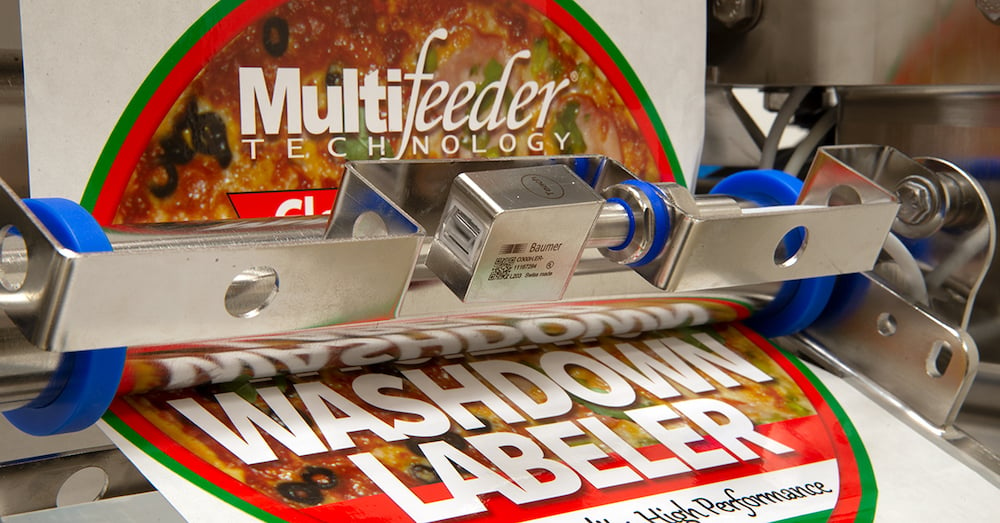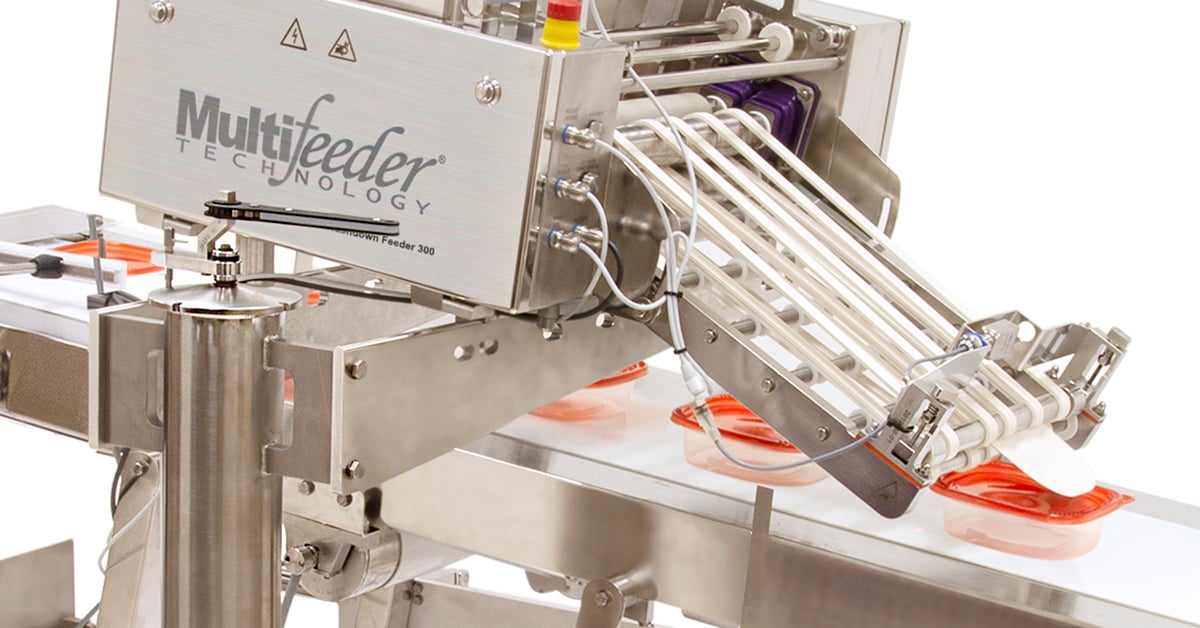In the Food Industry, the top priority is to prevent and identify possible contaminations. Food packaging works hard to reduce the risk of contamination with strict regulations and guidelines for their plants.
There are three levels of packaging in the food industry; Primary, Secondary, and Tertiary. The levels are very important and determine the strict regulations and guidelines for handling a product. Starting at the Primary level, this is when food is most vulnerable to contamination it is the packaging that encompasses the raw food product. For example, the plastic bag that holds the cereal is a Primary level of food packaging. The regulations and guidelines are stringent for the best protection and prevention measures to protect raw food products. A Secondary level of packaging in this example would be the cereal box that holds the bag of cereal. This packaging level does not have direct contact with the raw food (cereal) product and usually carries the primary packaging. The regulations are more relaxed for the Secondary level of packaging than the raw food product is generally protected by the primary level of packaging from contamination. The Tertiary level of packaging is considered shipping packaging. There is almost no contact with the raw food product. The main purpose of Tertiary packaging is to protect the Secondary level of packaging during shipping.

In the food packaging industry, the equipment is specifically designed to match the different regulations and sanitation standards at each level of packaging. Almost all equipment used on the production floor has a washdown or hygienic design.
What is the difference between washdown and hygienic design? In short, hygienic and washdown equipment is designed for the frequent and aggressive cleaning needed in the food packaging industry. Hygienic and washdown equipment can withstand harsh chemicals and can be quickly dismantled to gain access to hard-to-reach places for cleaning. The significant difference is hygienic equipment is designed to minimize crevices and horizontal surfaces which are places where water and other contaminants often collect. Washdown equipment lacks this design feature but still includes important features such as a clean-in-place design. This does not mean that hygienic is any better than washdown, each equipment design has its place on the production floor.
Washdown Friction Feeder
The Washdown Friction Feeder builds upon the robust MFT ip3 Friction Feeder and features the same high performance and efficiency as our flagship line of Friction Feeders. Made with 304 Type stainless steel, the Washdown Friction Feeder was designed for end-customers in the food industry where repetitive and aggressive cleaning is required for the production floor equipment. The open design allows for minimal disassembly for easy cleaning and maintenance. The Washdown Friction Feeder meets sanitary requirements and complies with IP66 or higher as well as NEMA4X standards.
The Washdown Friction Feeder is ideal for the Secondary level of packaging where there is minimal contact with raw food. A common application is feeding pizza circles. Necessary for many frozen pizza brands, pizza circles are a cost-effective part of frozen pizza packaging. The corrugated circles are ideal products to be fed as they are flat and rigid, making them easier for the friction feeder to control. See the Washdown Friction Feeder in action feeding pizza circles in the video below!
Hygienic Washdown Friction Feeder
Hygienic Washdown Friction Feeder houses the same reliable software and hardware as our robust Industrial Performance (ip3) flagship line of friction feeders. The Hygenic Washdown Friction Feeder separates and feeds products one at a time for accurate and precise placement onto a conveyor or base product. The design features the ability to easily remove portions of the machine that cannot be cleaned to a hygienic standard without soaking or disassembly. Type 304 stainless steel can be washed with harsh chemicals, high water temperatures, and high water pressure without affecting the integrity of the components and does not absorb moisture. Ideal for food packaging applications, the Hygenic Washdown Friction Feeder is a versatile piece of equipment and can easily integrate into existing production lines.
A common application for friction feeders is tipping. Tipping is an industrial automation term that refers to joining two products together. A friction feeder accurately places a flat tip-on product onto another product moving underneath the feeder (usually on a conveyor). The two products will typically be affixed together using glue sprayed from a hot-melt gluing system. With MFT Automation’s trademark Accutipping method, the system can tip products in a continuous motion without stopping at sustained rates up to 500 products per minute. The Hygenic Friction Feeder is ideal for tipping products onto base products that are in the secondary level of packaging. Food containers, boxes, and more are common base products for tipping applications. Watch our Hygenic Washdown Friction Feeder tip cards onto containers in the video below:
Hygienic Washdown Automatic Product Loader (APL)
The Hygenic Automatic Product Loader (APL) is an essential accessory for expanding the capacity of a friction feeder. Multiplying the product capacity of a Hygenic System, the Hygenic APL maximizes run time and keeps production lines moving. This conveyor is built with type 304 stainless steel and is designed to minimize water collection points on the machine to reduce the build-up of contaminants. The Hygenic APL follows FDA standards and meets various sanitary level requirements depending on the application. See how Hygenic APL increases the friction feeders capacity in the video below:
Hygienic Washdown Labeler
The Hygienic Washdown Labelers were explicitly designed for labeling at the Secondary packaging level in food packaging. Plated with type 304 stainless steel and passivated for corrosion resistance, the Hygienic Washdown labeler can withstand harsh chemicals and aggressive cleaning. Minimal contamination points reduced disassembly for easy cleaning and maintenance. The Hygienic Labelers meet IP69K requirements and exceed IP66/NEMA4X standards to ensure consistent washdown performance. The labeler is capable of running up to 12-inch wide labels. The adjustable angular peel plate is suitable for a wide range of applications. Separate unwind, drive, and rewind servo controls provide maximum control, stability, and performance.

The Hygienic Washdown Labeler is ideal for labeling frozen pizza rounds. Frozen pizzas are often wrapped in plastic as cost-effective packaging. The frozen pizzas then need a label to stand out on the grocery store aisles and to meet the display requirements for the nutritional facts label. The Hygenic Washdown Labeler labels at high speeds as the frozen pizzas pass below on a conveyor belt. See the Hygenic Washdown Labeler in action as it labels frozen pizzas!
Your Food Packaging Automation Solutions Partner
MFT Automation has over 25 years of experience in the food packaging industry creating automation solutions for customers to improve their productivity and efficiency. Offering a wide
range of washdown and hygienic equipment that can easily be integrated into existing production lines or configured into a customized system, MFT Automation works directly with customers to find the perfect automation solution for a customer’s application. MFT has an abundance of in-house resources including a machine shop with modern CNC and lathe machines for building equipment to spec. Talented teams of Mechanical, Electrical, and Software engineers, work with customers from the first solution draft to installation and integration. Let's get the conversation started! Contact us about your latest food packaging automation challenge today!





